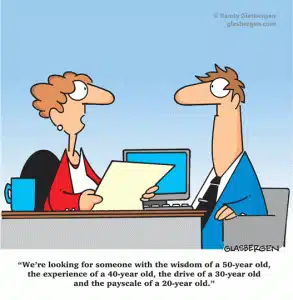
Redundancies and retrenchments of any scale are fraught with issues
Layoffs are hard. Even a small-scale retrenchment or redundancy can present a seasoned HR professional with numerous issues – many unforeseen. So what can you do to make it easy on yourself, on those impacted, and those remaining?
As an HR professional, the first thing to know is that the list of people impacted directly or indirectly by the layoff is going to be a moving feast. People will be initially put on a list and then argued off the list.
So it is absolutely critical that you ensure you have well-articulated, well-supported, and well-established criteria and that each person on the list is reviewed with management against those criteria to ensure consistency, integrity, and equity.
Resourcing the process
Once the redundancy and retrenchment list has been completed, it is vital that you plan for having enough resources to conduct the layoff quickly and efficiently. Not enough people helping on the day with well-defined roles to play, will mean a poorly managed process. As the HR professional, even when well-resourced, you will be battling all sorts of emotions, blow back, and unforeseen events. So make sure that you co-opt or hire sufficient people into the layoff process for appropriate coverage on the day.
Cruel to be kind
Now this may sound hard, but make the layoff process as simple, as quick and yet as compassionate as possible. While it may seem harsh, this really is the best for all concerned. It’s akin to a relationship breaking up. Dragging it on is painful for everyone.
The truth with technology (Smartphones, Yammer, an assortment of Social Media and E-mail) is as soon as the first person has been notified of their layoff, that news is going to be heard by many people in a very, very short time. The ripple you might have expected to have created with each retrenchment or redundancy can quickly become a surging wave.
Generally, you should expect that almost all work stops as fellow staff wait to see who else is going to be impacted. So short, sharp works well in the medium and longer haul. This also requires that you have clear messaging in place with all stakeholders to reduce any potential blow back and the duration of unproductive activities.
Preparation considerations
As an HR professional, to prepare for laying off people, you should at least be asking the following questions:
- Who is impacted? Who are the managers of the impacted staff? Who is needed to execute the plan?
- What roles will be played by management and HR? What is the key message to all impacted – directly and indirectly? What are the termination packages? What are the legal matters that need to be addressed?
- Where are the impacted locations? In what building/s will the notification meetings be conducted?
- When is this going to take place for each staff member on the list?
- How will you enact the layoff plan: the actions to be done before, during, and after layoff notification to those who are directly and indirectly impacted?

More about this topic: read about 2 contrasting cases of handling layoffs well and poorly here; and on the values expressed by handling people well as they depart here.
* * * * * * * *



